The Swan at Lavenham, Suffolk
I know that finding a great place to stay, one packed full of history and character, will be top of your wish list when planning your Tudor road trip. I recently wrote about West Stow Hall, a fabulous bed and breakfast just outside, and to the north of, Bury St Edmunds. The Swan at Lavenham, some 20 minutes south of the town is another gem that is worthy of serious consideration if you are thinking about exploring this truly beautiful and historic county.
The Swan was an old coaching inn but is now a luxury hotel and spa, describing itself as ‘one of the finest luxury hotels in Suffolk’ and rated 4.5 stars on Tripadvisor. I recently had the pleasure of exploring its delights, and that of the surrounding village, on my own recent Tudor adventure.
A Brief History of Lavenham
The village of Lavenham, in Suffolk, is a veritable time capsule. Quaint streets are lined with timber-framed houses, many decorated in pretty pastel plaster; some small, some grand, all sloping unevenly this way or that as if inebriated by the passage of time.
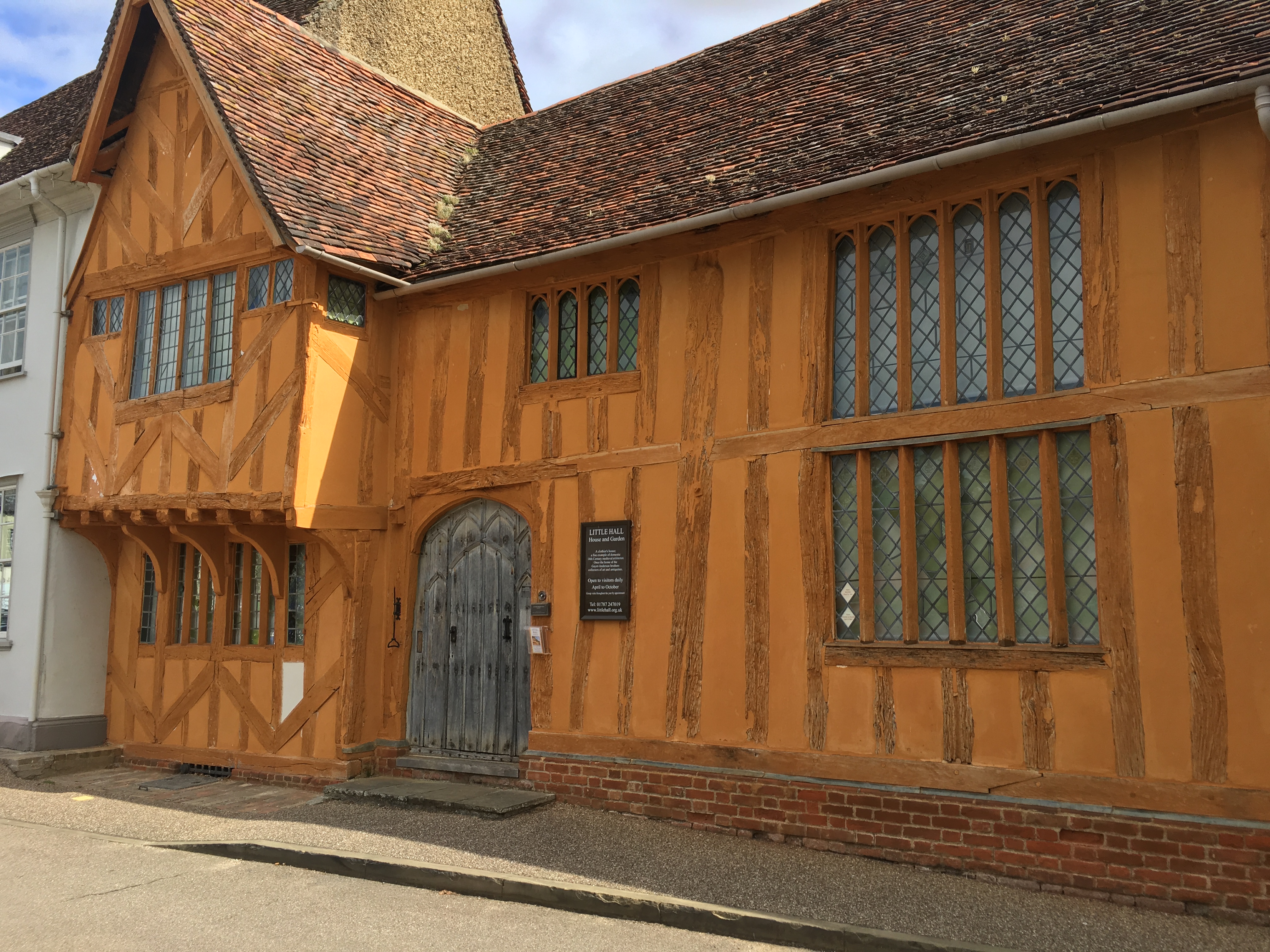
The history of the village, and why its medieval and Tudor architecture is so perfectly preserved, is an interesting one. During the Middle Ages, Lavenham was one of the most prosperous towns in the country. It paid more taxes than either York or Lincoln. So great was the affluence of its citizens that on a visit to the town, Henry VII fined some of the locals for their ostentatious display of wealth.
During my visit, as I strolled around the now sleepy village, a friendly local, passing the time of day in the market square, recounted the village’s sorry decline. He told me how the town was made wealthy on account of its wool trade. Then, in the sixteenth century, Dutch immigrants began to manufacture cheaper cloth in the nearby Essex town of Colchester. Lavenham’s fate was sealed; it vibrant trade in wool declined rapidly; fortunes were decimated.
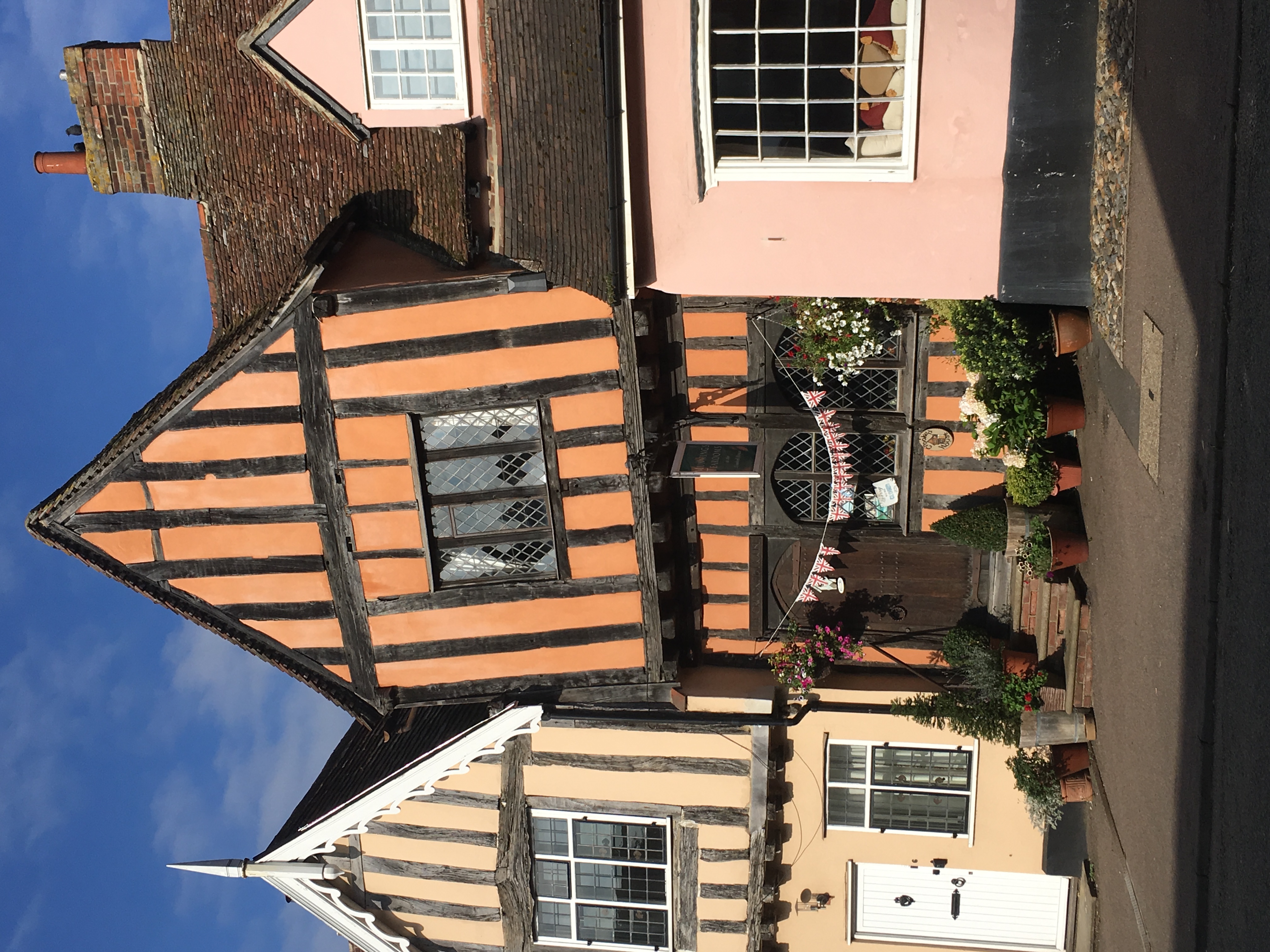
This sudden change meant that, subsequently, the townsfolk of Lavenham did not have the funds to continually upgrade their houses in accordance with the latest architectural fashions. Perfectly symmetrical, double-fronted, Georgian brick houses were an impossible dream. And so, thankfully for us, Lavenham’s medieval vibe prevailed.
Today, the village has come full circle, but for very different reasons. It is no longer the wool trade which brings wealth into the town but the tourist trade. Film-makers also regualrly use its medieval quirkiness as a backdrop for their creative endeavours. For example, Lavenham was used to film scenes in Harry Potter and the Deathly Hallows, providing inspiration for the fictitious Godric’s Hollow.
Lavenham is now renowned as being one of the best-preserved medieval villages in the country, full of architectural gems, including; an impressive wool church (built in the 1520s) with the tallest church tower in England and some fine internal, carved oak parclose (like a screen); a stunning Guildhall, which dominates the market place, and the rich terracotta-coloured Little Hall, a fine example of a medieval wool merchant’s house.
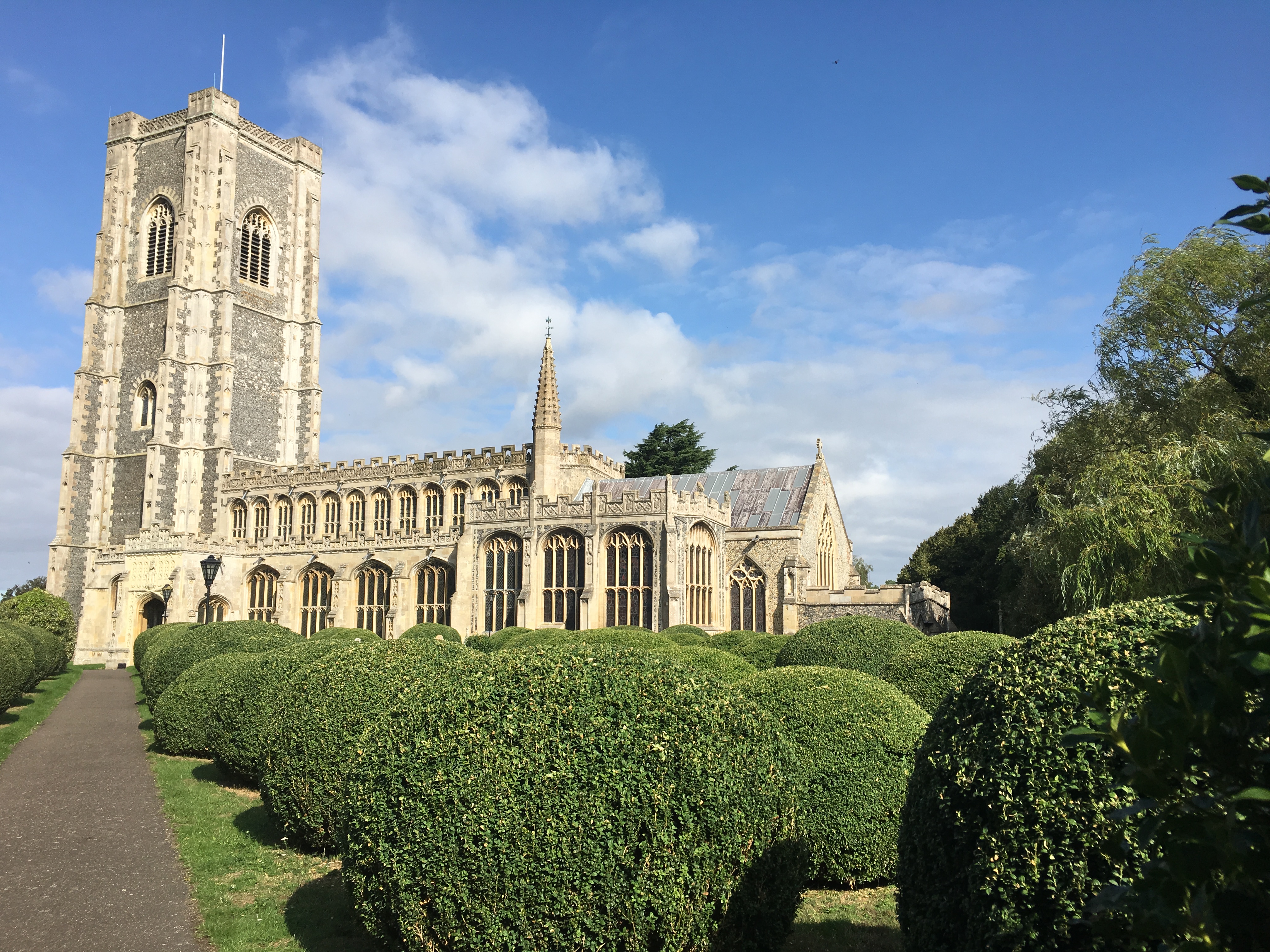
The Swan at Lavenham
‘Enter through our heavy oak beamed archway into one of the finest hotels in Suffolk. Step into our stylish lounges where elegant sofas and armchairs lie invitingly in cosy nooks or next to our vast open fireplaces – it’s the perfect start to your memorable stay.’ The Swan Inn
As I mentioned above, this fifteenth-century hotel was once a coaching inn, with stabling for around 50 horses. The stables are long gone, and images hung up in the Wool Hall show the building in the early twentieth century, clearly in a state of near dilapidation. How things have changed!
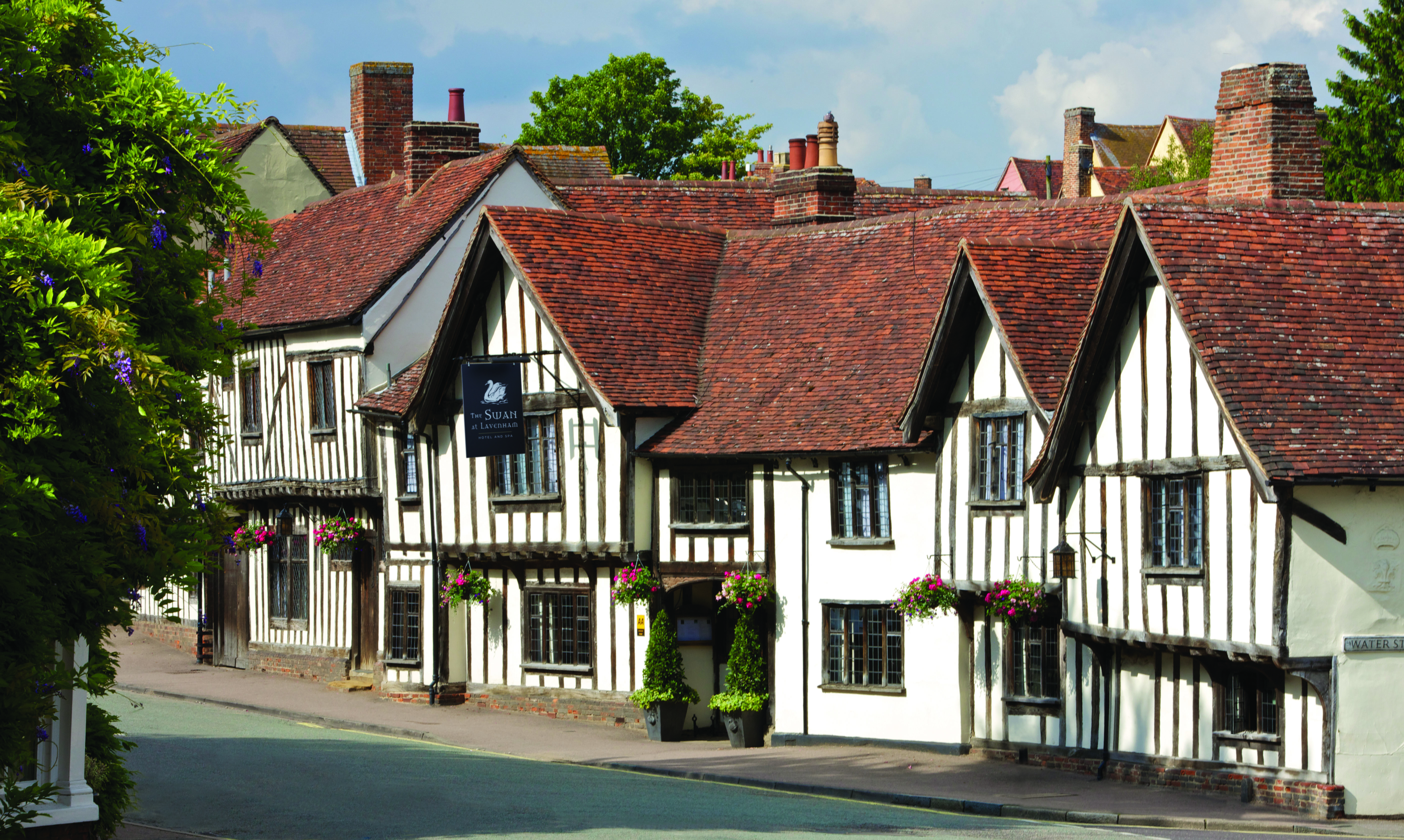
The Swan is now a luxury hotel and spa. Whilst I didn’t sample the spa, I was impressed that it had available an afternoon detox tea; a kind of variation on the quintessentially English cream tea but with vegan and gluten-free options (being a veggie, gluten-free girl, this rare find was impressive!).
However, of course, what most delights are the oak beams and wibbly-wobbly floors and ceilings, all of which fill the place with bags of Tudor character. The other outstanding feature of The Swan is its customer service; friendly, courteous and attentive.
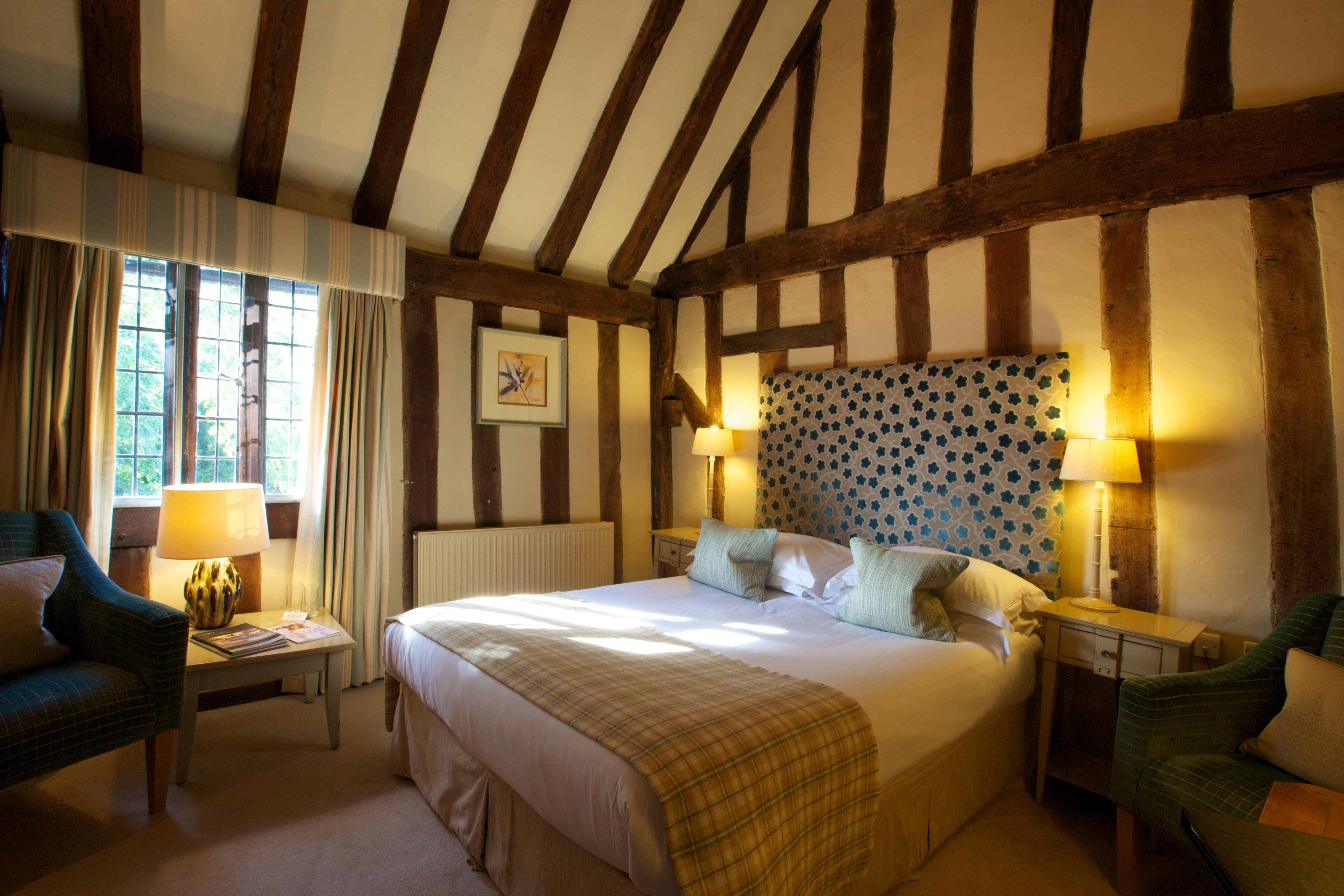
There are rooms to suit a variety of budgets, although none would be classed as ‘budget’. Bedrooms, the downstairs lounge areas, and the restaurant are all elegantly furnished. A large log burner must make for a cosy winter getaway. The quality of the restaurant’s fare is renowned in the village, although again, perhaps not for those on a budget.
I‘d give The Swan a strong 8/10 and would not hesitate to recommend it for those of you visiting the Bury St Edmonds area to visit some of the remnants of this beautiful county’s rich medieval and Tudor history. Other than Kentwell and its 10 day Tudor festival, other sites of particular interest to the Tudor enthusiast are: The ruins of St Edmundsbury Abbey; Framlingham Castle and the remnants of Westhorpe Hall.
Do let me know if you have visited or stay there in the future; leave a comment or email me at sarah@thetudortravelguide. You can also post photos from your own Tudor road trip with the #thetudortravelguide on Instagram I love to see how this blog has inspired you!
Visitor Information
The Swan: Click on the link for further information on rooms and availability.
The Guildhall: According to the National Trust website, who now own the Guildhall: ‘You can discover the stories of the people who have used the Guildhall through its almost-500 years at the heart of its community, and learn about the men and women who have shaped the fortunes of this unique village.’
The Little Hall: Run by the Suffolk Buildings Preservation Trust, Little Hall is one of the oldest and best-preserved buildings in Lavenham. A 14th-century house, built for the Causton family of clothiers.
Lavenham Blue Vintage Tea Room: centrally located opposite the Guildhall on Market Lane. Run by the lovely Amanda, who told me that three years ago she was inspired to turn her front room into a tea room and follow her dream. She lives upstairs, whilst her vintage-themed tea room and selection of fabulous village-made cakes are a feast for the senses. She has never looked back. It is full of vintage charm and friendly to vegans and gluten-intolerants.

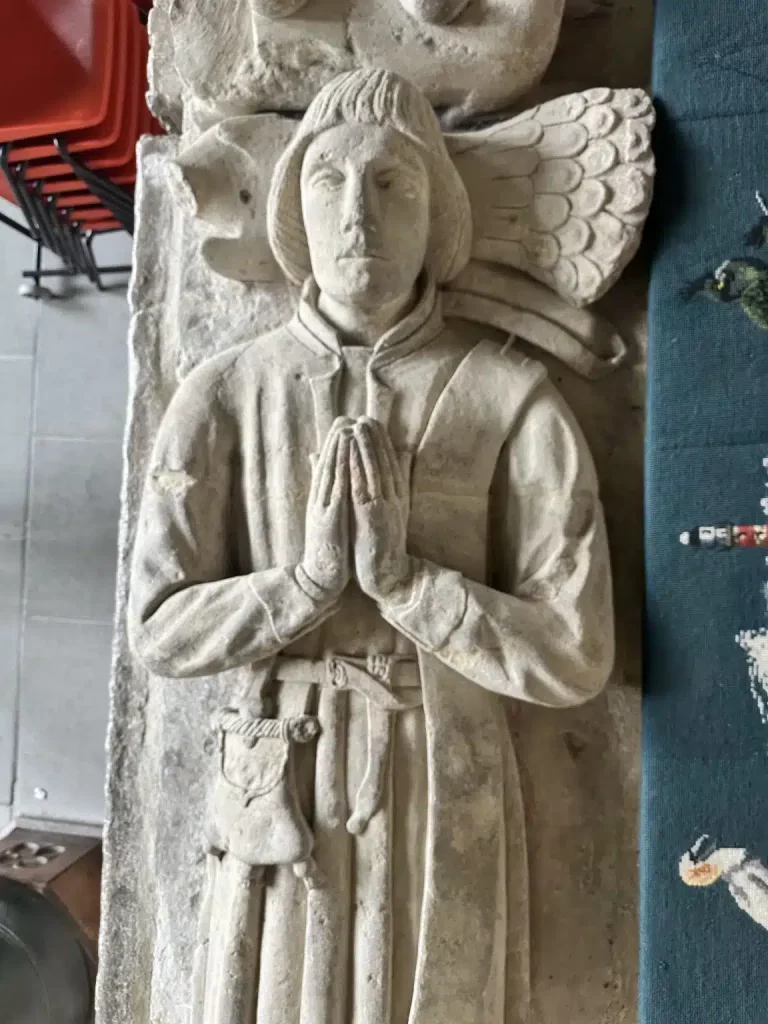
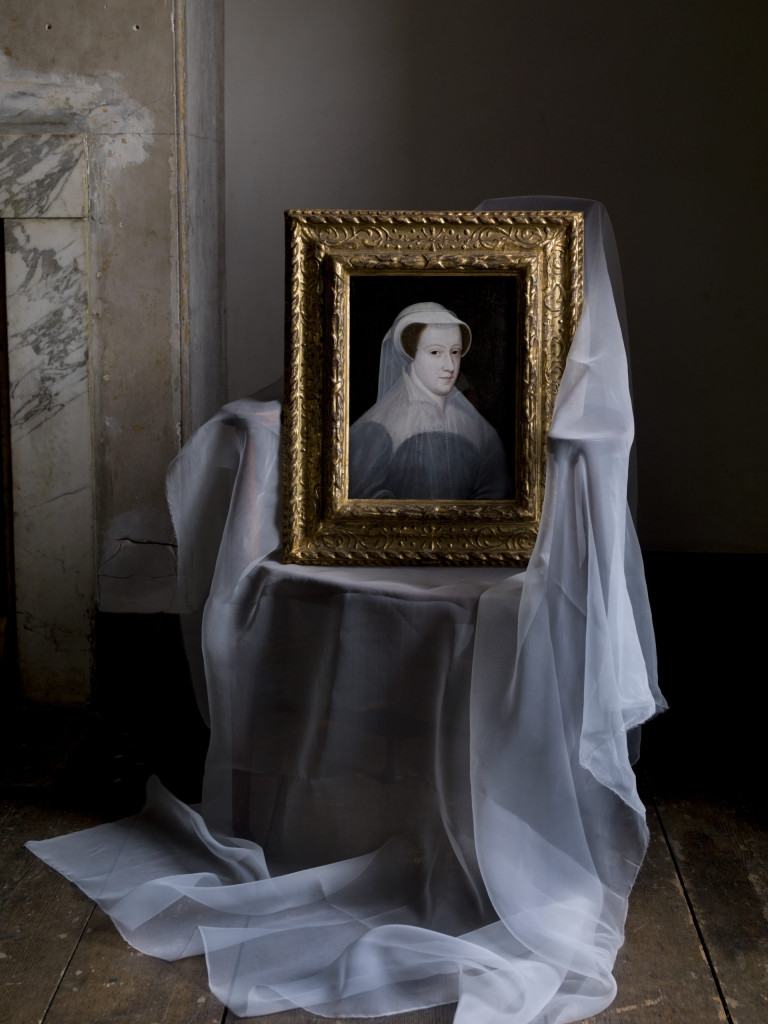
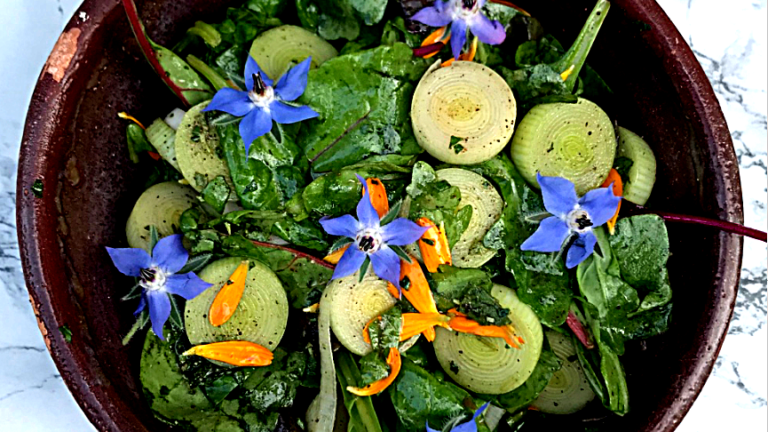
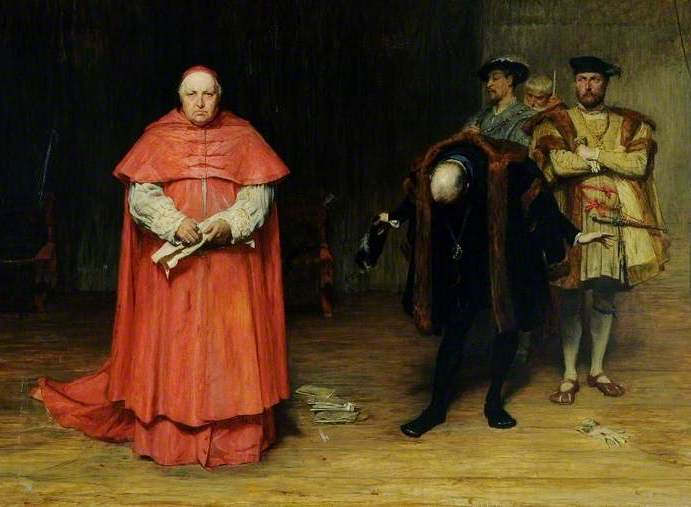
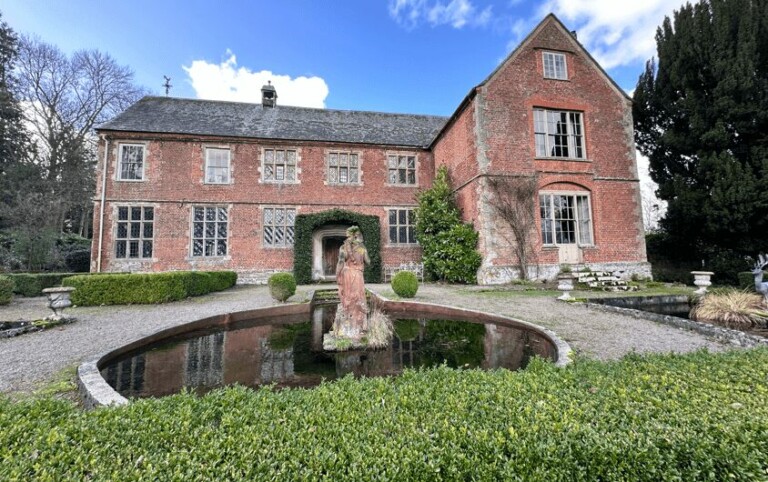
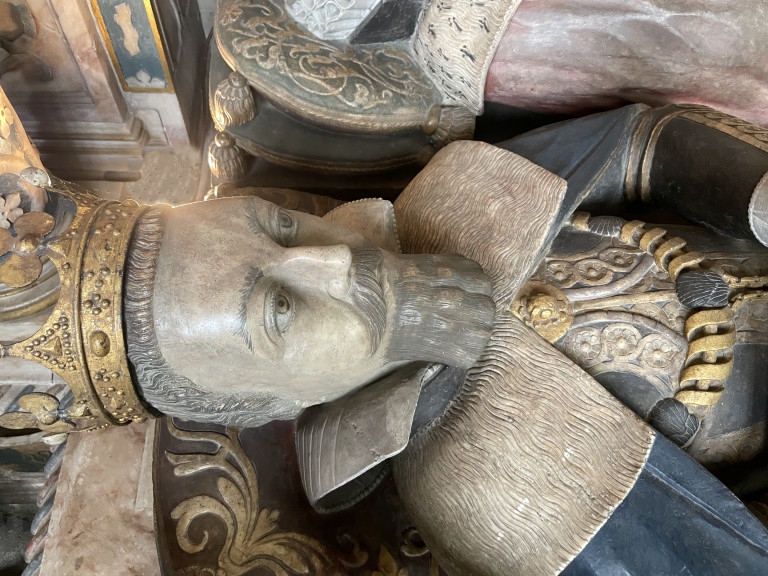
Enjoyed travelling back in time to Lavenham recently – and the staff at the Tourist Information Centre are really helpful. I
Excellent tip! Always go to the TIB!
Thank you for your interesting article. Next time also visit neighbouring Long Melford where you can see more gems, such as Bulls Inn and at St Mary’s church Chapel of Cloptons and The Lady Chapel.
Ho Marianne, thanks for posting! I have indeed visited Long Melford. In fact was there this time for Kentwell which will be the subject of the next blog. ????However, your suggestion for anyone reading this blog is an excellent one. Thank you!
Lovely article on Lavenham but if I could correct you on one point. It`s Bury St. Edmunds, not Edmonds. The latter is a French spelling and the saint in question was definitely English, well Anglo-Saxon if you prefer! Before martyrdom at the hands of Danish invaders he was king of East Anglia, of which Suffolk was part.
Thanks, Greg, Yes, of course. A typing error on my part. I’ll look to correct it. Best wishes, Sarah